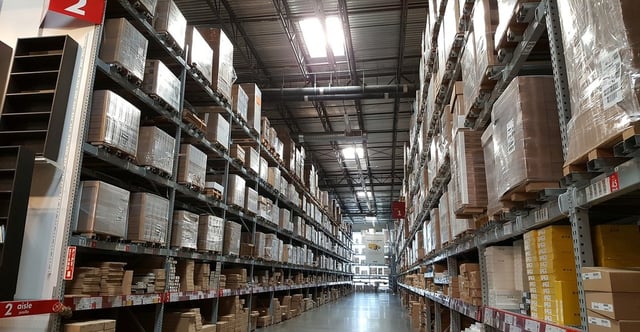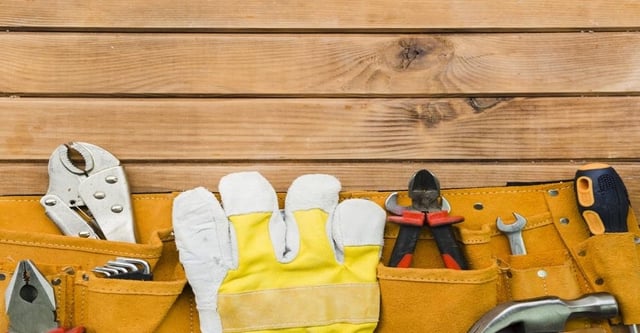Filter by Catalogue:
Products Found:
LOOKING FOR SOMETHING?
New developments and trends in the construction sector to keep an eye on

Being up to date on the latest trends in the construction sector means never missing an opportunity.
At a time in which it has become difficult to anticipate demand from materials from customers, keeping a close eye on the new areas of interest for construction operators and the new materials they are using allows you to ensure you are ready when your customers request quotes for new materials. It also means you can actively promote new products and attract potential new clients by offering alternative, cutting-edge solutions.
Here are some of the trends in the construction sector in 2017.
Residential green building
The development of green construction projects, which use sustainable design methods and products, continued in 2017, partly to meet customer demand and partly to adhere to more stringent environmental regulations. The focus is still very much on natural products, eco-friendly materials, energy-saving systems, thermal insulation, soundproofing and breathability in spaces.
Here are a few examples of the products in the Dakota catalogue and how they are used in green building:
- External walls – Plasterboard panels for use outside, in damp environments and for protection against fire. These are fully recyclable products, guaranteeing zero environmental impact. Made from natural raw materials, they represent the best way of guaranteeing sound and thermal insulation and ensuring adequate protection against fire.
- Comfort and protection – Certified bio-soluble mineral wool is the best product for insulating walls, roofs and partitions. Made using natural raw materials (rock, silicon etc.), it is a breathable material that ensures the right level of air renewal between indoors and outdoors. It does not generate microorganisms (unlike animal- or vegetable-based materials), remains intact over time, has good attributes in terms of sound and thermal insulation and protection against fire and is economically advantageous.
- Quality of life – Roof garden – New construction technology and the development of new products allows us to transform flat surfaces (roofs, garage coverings etc.) into welcoming areas that can be lived in and are packed with vegetation. In turn, this helps to reduce the presence of fine dust and reduce the levels of CO2 in the atmosphere. There are many solutions on offer, spanning a wide range of materials: eps/xps insulation, liners, breathable cloth, embossed membranes, roof accessories, ventilators, covers made from heat-treated wood etc.
- Air quality – use of natural products, with no solvents or harmful chemical agents, such as active breathable paints to inject new life into spaces and clean up the air.
Comfort and wellbeing
It’s not just about saving energy. Standards have been raised and – rather than energy efficiency – homes and commercial spaces are looking at comfort and wellbeing encompassing temperature, acoustics and visual appearance. Indoor air quality is another big trend. Materials, coverings, doors and windows and interior finishes are now chosen in order to improve the way buildings regulate the temperature, promote air renewal and decrease the presence of dust and mould.
Passive houses with no heating
Over the past few years, there has been a lot of talk about the construction of passive homes, made from materials such as wood, bricks and reinforced cement, which means that they need virtually no central heating system. The increased availability of the products, construction operators and designers necessary to build these types of houses has driven construction costs down and turned this into one of the most important construction trends in 2017, particularly as regards reconstruction projects designed to ensure EnerPHit compliance.
Here are some products and materials to stock or considering adding to your range:
- mineral wool, a thick, breathable product used to insulate walls and roofs;
- photovoltaic accessories and products;
- geothermal accessories and systems;
- products and accessories for pellet central heating systems with air distribution in the building;
- energy-efficient window fixtures;
- accessories and items relating to ventilation systems;
- photosensitive, apochromatic active glass.
Lightweight anti-seismic houses
The increase in the earthquake alert has promoted construction companies, in both residential and other sectors, to take anti-earthquake measures when approaching new builds or reconstruction projects. The use of wood in construction is on the rise on account of its resistance, versatility and flexibility, while additional solutions for strengthening and improving structures are also under development.
Here are some of the potential uses:
- Anti-collapse systems and other strengthening systems which use carbon fibre mesh to ensure structural elements meet with anti-earthquake regulations, or additional ultra-light plasterboard panels.
- Load-bearing structures in steel are the best anti-earthquake solution on account of their lightness and flexibility, especially when combined with lightweight partitions (plasterboard, wooden roofs etc.).
- Use of suspended ceilings to counteract the effects of earthquakes and prevent ceilings from caving in case of a seismic event.
- Internal vertical walls fitted with metal profiles and ultra-light panels.
- Foundation systems using isolated platforms to nullify the intensity of the earthquake.
Protection against fire
The Grenfell Tower tragedy in London is still fresh in everyone’s minds. Protecting our buildings from the threat of fire is an aspect that often gets overlooked, yet proper planning could actually decrease the risk of fires spreading and thus save human lives.
Costs connected to the construction of completely safe buildings is minimal. All that is required is the use of incombustible or self-extinguishing products in combination with active protection measures where necessary. The combination of these kinds of solutions poses no architectural hindrance and makes the building safe and comfortable.
In Italy, there is a law that sets out safety requirements for building facades.
Whether a project is a new build or a reconstruction project, buildings can be made safer through the use of mineral wool products for insulation, instead of traditional plastic-based products, plasterboard panels for external cladding capable of resisting high temperatures for long periods of time, proper smoke extraction systems and active protection and alarm devices.
Technology
New developments in the sector aren’t limited to construction materials and techniques – the use of technology is becoming more and more widespread.
Construction using 3D printing
This refers to technology that uses 3D printing as the main method of manufacturing buildings or building components. Some companies have already managed to “print” entire homes using gigantic 3D printers, from cement and silicon-based materials. Benefits of this technology include the reduced risk to health and safety, the use of recyclable materials and the ability to produce elements that would otherwise be impossible to make.
Drones
The use of drones in construction is a trend that started a few years ago and that continues to grow in popularity. Drones can access remote areas and – thanks to their ability to take photos and record video – allow us to collect information, undertake inspections and create images or 3D maps that can be used for a range of purposes.
Augmented Reality (AR) and Virtual Reality (VR)
The use of Augmented Reality and Virtual Reality is the hottest tech trend in 2017, supplying virtual experience on a realistic scale using autonomous devices. VR is more popular among architects and engineers on the design side of things, while AR is growing in popularity on sites.
Innovation in product design and construction techniques stems from the need of companies to satisfy new requirements. Following sector trends and collaborating with producers and suppliers will allow you to stay in step with market demands. If you combine this with promotional activities on the internet, you’ll be able to let potential new clients know that you have the latest products in stock now.




